Brand Safety: How to Protect Your Brand Online in 6 Steps
Table of contents
A children’s toy company wouldn’t want its ads next to violent or adult content. Similarly, a luxury brand may not like its ads to appear on low-quality, controversial, or pirate sites that could tarnish its image.
That’s exactly what brand safety is about—displaying your brand in the right places to demonstrate its values and identity.
Brand safety ensures your brand doesn’t appear alongside inappropriate or harmful content. It protects your brand’s reputation by aligning ads with suitable content and contexts. Using advanced tools can prevent ad misplacement and, therefore, maintain brand integrity and public perception of your brand.
Here’s a great example of a threat to a brand’s safety.

Sometimes, a weird combination of advertisements is just funny; other times, it’s in bad taste, but it can also be controversial and outrageous.
It also strongly depends on your audience’s interpretation.
One thing is for sure—rather than fixing a ruined brand safety, it’s better to avoid this risk in the first place.
Read on for the nitty-gritty of brand safety and best practices for brand suitability.
What is brand safety?
Brand safety is a set of measures and practices that ensure a brand’s advertising does not appear in harmful contexts. This includes pirate sites, fake news, and pages with bot traffic.
Essentially, it’s about protecting brands’ images by controlling the environment in which ads appear, both online and offline.
This is particularly important in digital advertising. With the programmatic placement of adverts, they can sometimes appear next to inappropriate, offensive, or controversial content.
Why is brand safety important?
- Protect brand reputation: Poor ad placements hurt brand perception.
- Build customer trust: Unsafe ads erode trust, which is hard to regain.
- Financial impact: Misplaced ads waste budget and hurt sales.
- Legal risks: Inappropriate ads can result in legal penalties.
- Audience engagement: Poor ad context lowers engagement and ROI.
- Competitive advantage: Strong brand safety supports building brand loyalty and helps you win with other companies in the industry.
- Global consistency: Ensure safety across markets despite cultural/legal differences.
- Crisis prevention: Brand suitability and proper content management avoid PR disasters.
- Social responsibility: Support ethical practices through ad choices.
- Partnerships: Reliable brands attract better collaborations.
Poor safety leads to costly damage. Prevention is key.
The 6 key brand safety practices
Here’s a list of 6 crucial brand safety measures to minimize brand risk incidents.
01 Establish brand suitability guidelines
The best way to solve brand safety concerns is to start your digital advertising by setting clear guidelines.
You must decide which contents are not aligned with your brand. In other words, which topics are not suitable to feature your ads. These could be:
- Conspiracy theories
- Fake news
- Spam
- Violence & gore
- Adult content
- Terrorism
- Crime
But also for some brands:
- Politics
- Religion
- The bad news (accidents, natural disasters, wars, riots), etc.
02 Blocklist irrelevant sites
Now, with your guidelines at hand, you can easily block irrelevant sites where you don’t want your online advertising to appear.
Great!
Threats eliminated.
But let’s not stop here.
03 Ensure relevance
Next, consider the positive associations you want to create around your brand. Based on that, choose the topics you want to feature your brand advertising.
These can be very general (like joy) or very specific and industry-related (like facial skincare products).
The only thing that limits you is your imagination… and the filtering options your advertisers enable.
Pro tip: To precisely select topics where your ads are displayed, you can choose contextual advertising instead of behavioral targeting, which relies on Cookies.
Additionally, make sure that you place ads on the right platform.
How?
Check where your target audience is and develop your digital marketing efforts there.
With Brand24, that’s very simple.
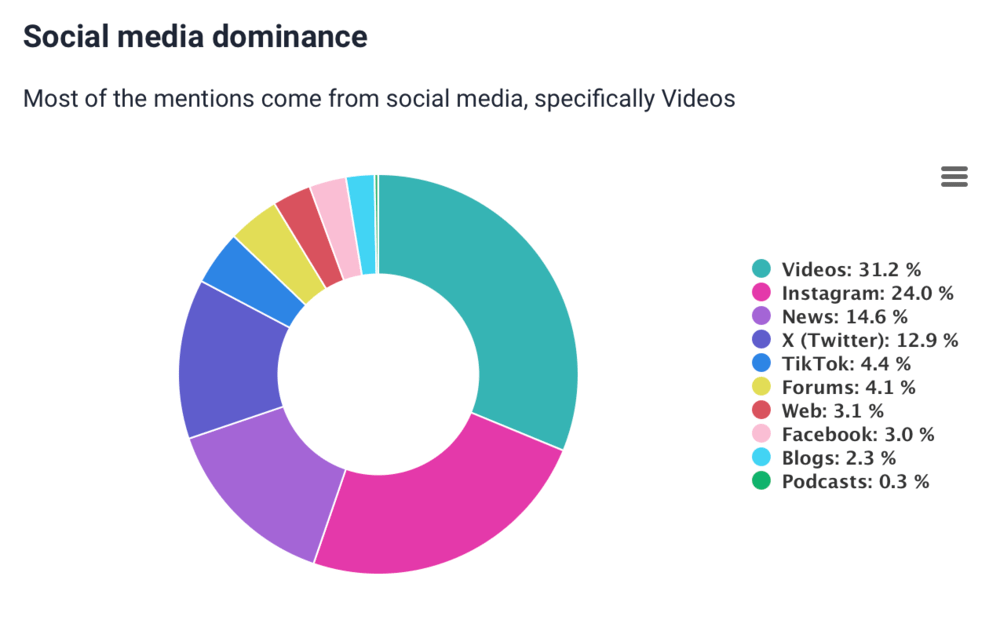
Now you know that video platforms like YouTube and Twitch are McDonald’s best options for online advertising.
Of course, this will look different for different companies.
Join the circle of the most successful brands.
04 Follow the industry-regulated framework
Ensure your adverts comply with industry regulations, which may vary by country.
For instance, there are strict guidelines on advertising tobacco, alcohol, or pharmaceuticals.
05 Chose a reputable programmatic provider
A reputable programmatic provider can ensure your ads are placed in safer and more suitable places. Of course, this comes at a higher cost.
Thus, you must choose between a cheaper programmatic advertising provider with higher potential risks and a more costly one.
It’s important to note that the latter still doesn’t guarantee brand safety. It only minimizes the risk of your ad appearing in a detrimental ad space.
06 Monitor your brand safety in real time
The previous 5 steps aim at minimizing the risk to your brand’s safety.
However, you can never be sure a bug will not occur unless you monitor your brand’s online performance.
With modern AI-powered media monitoring tools, you can easily track your brand’s position in the digital landscape.
The key benefits include:
- Mentions monitoring
- Sentiment analysis
- Detection of negativity sources
- Metrics comparison over time
- Campaigns monitoring
Gain more control over your brand safety.
How to measure brand safety?
Different platforms and programmatic advertising networks offer various tools and features to help advertisers maintain brand safety.
However, 100% safety cannot be guaranteed. Thus, I strongly recommend constant monitoring and adjustments.
With the help of AI-powered brand safety tools, this becomes a breeze.
Let’s take a look at the key brand metrics you should track.
AI-powered Anomaly Detection
This feature is a lifesaver if you only have a little time to check your brand’s safety.
Anomaly Detector catches unusual spikes in your brand’s reach and volume of mentions and identifies the reason behind them.
This means you quickly learn about the issue when a risk to your brand safety occurs or your brand experiences a PR crisis.
This empowers you to act swiftly and implement an online reputation repair strategy.
For instance, McDonald’s recently got involved in a political exchange between Kamala Harris and Donald Trump.
While the Democratic Party’s candidate claimed to have worked in the fast-food chain, the Republican Party’s candidate tried to debunk this.
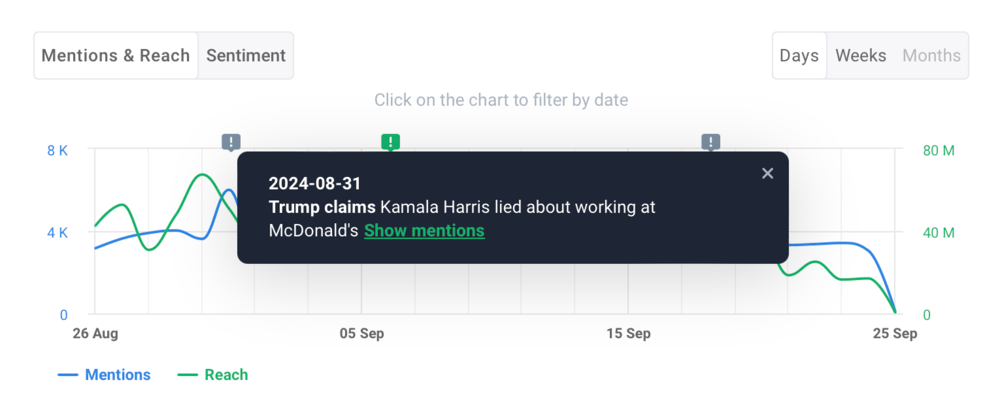
As a result, an agitated political conversation emerged online. What were the sentiments?
Sentiment Score
Sentiment analysis is key. You have to know if your audience perceives you negatively or positively.
In the case of McDonald’s, the political discussion around the brand evoked negative emotions.
On August 31, the day the anomaly was detected, McDonald’s received 996 positive and 1827 negative mentions.
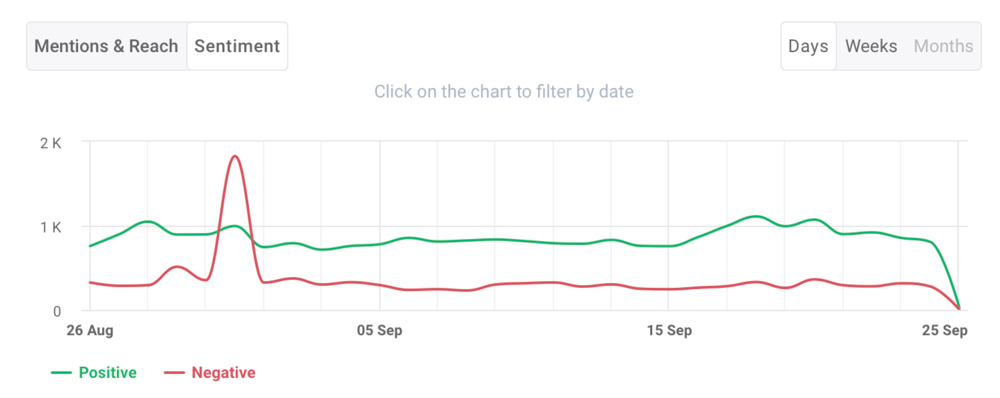
Is your brand safe? Check it now.
But what if you want more detailed information about how people feel about your brand?
It’s also possible!
Emotion Analysis
AI-powered emotion analysis gets into the details of how people feel about your brand. It can identify joy, disgust, admiration, sadness, and fear.
With these AI insights, you can adjust your marketing to match the right emotional notes.
What did it look like for McDonald’s on August 31?
Let’s take a look.
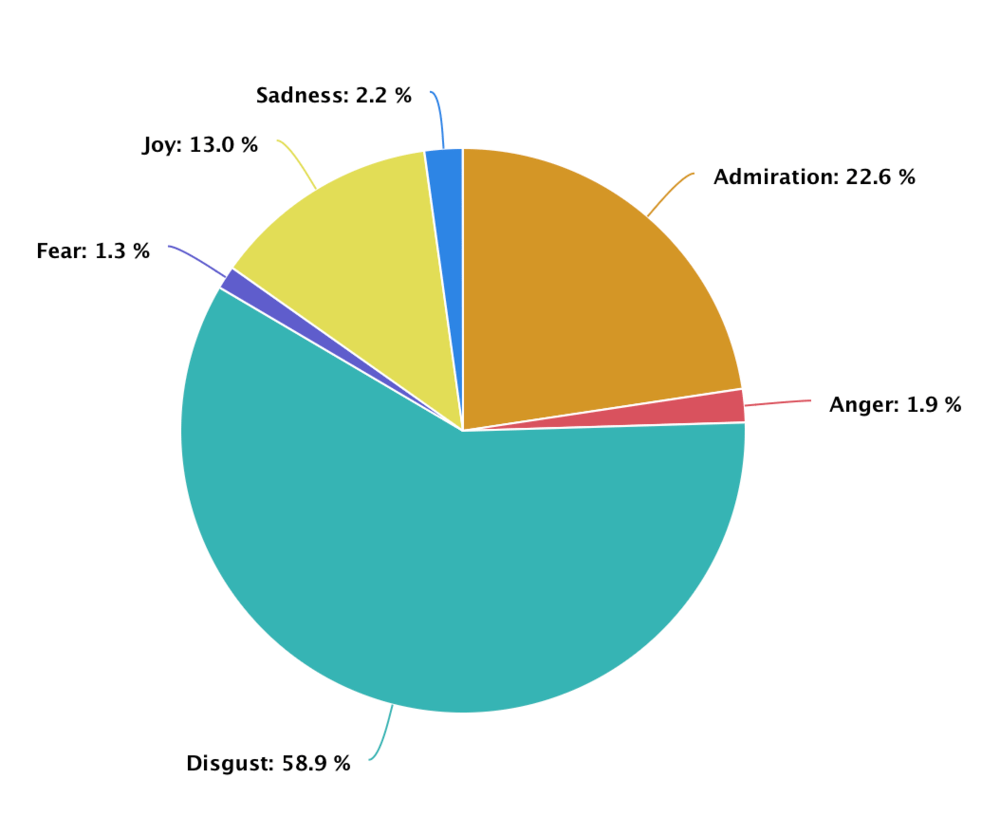
Wow, that doesn’t look good.
Let’s compare it to the emotions a few days before the Kamala-Trump controversy emerged.
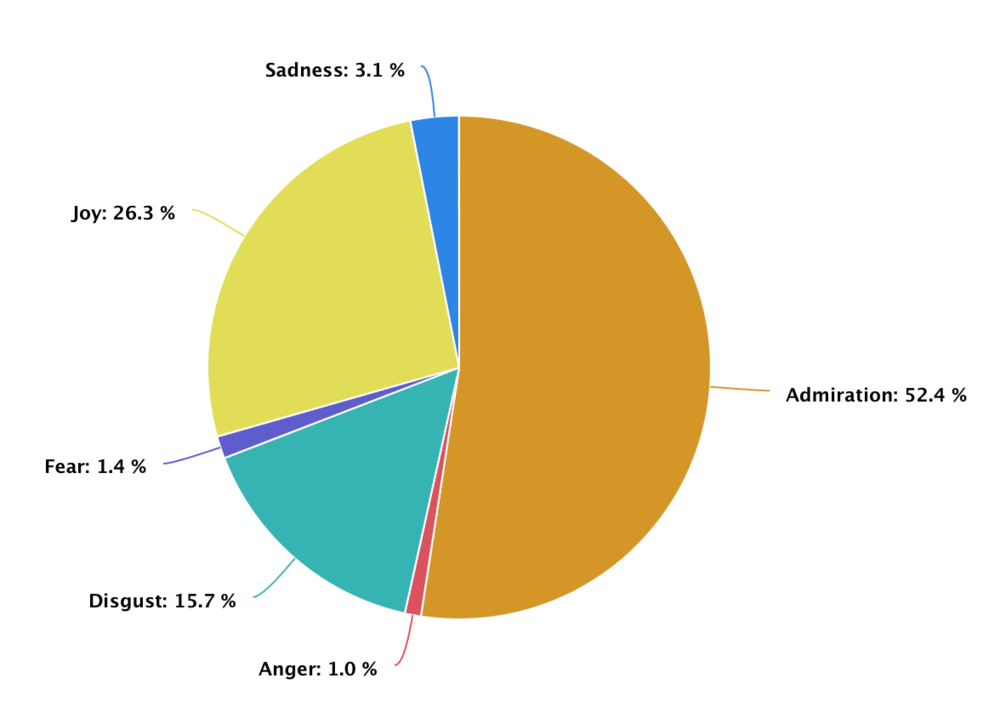
The difference is HUGE. All marketers know this situation must be addressed.
Is your brand safe? Check it now.
The next step to make your brand’s reputation safe again should be to detect the most damaging source.
How to do it?
The source of negativity
Thanks to AI, you don’t have to manually browse the mentions related to this emotion.
You can use the AI Metrics tab to learn which source generates the most negativity.
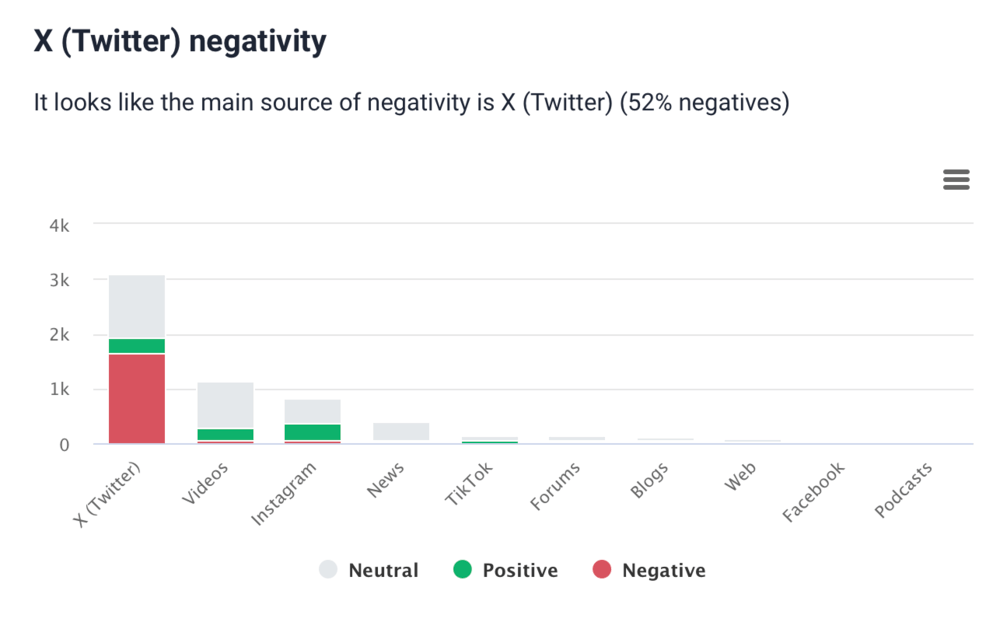
And boom, it’s all Twitter’s fault!
Now, adjust your message on this specific channel and address the issue.
Reputation Score
Last but definitely not least, there’s the Reputation Score.
It shows the overall perception of your brand based on online data. It is a numeric value that reflects your brand health.

By regularly monitoring your brand’s reputation score, you can quickly identify any shifts in public perception.
This way, instead of curing – you can prevent potential damage before it escalates.
Monitor your brand safety with Brand24!
How to limit brand safety risks on social media platforms?
Since brand safety is mostly discussed in the context of advertising online, it’s important to pay closer attention to your social strategy.
Here are the best practices you can follow to avoid having offensive or inappropriate content mixed with your brand image.
01 Platform familiarization. You must know each platform’s features, ad formats, and targeting options. Each social network has its own set of tools and settings for brands and advertisers.
02 Use safelists. Create lists of safe accounts, pages, brands, or influencers that align with your brand’s values. Advertise exclusively or primarily within these safe environments.
03 Implement blocklists. Create lists of keywords, topics, or accounts you want to avoid. Many platforms allow advertisers to exclude specific keywords or subjects from their campaigns.
04 Leverage brand safety tools. Use services with advanced monitoring, reporting, and control capabilities.
05 Monitor comments and engagement. Social media ads often allow for user comments. Monitor these for any inappropriate content or negative sentiment and respond appropriately. There’s also the option to disable comments on some platforms, though this can limit social media engagement. You can monitor comments via social media monitoring tools.
Protect your company!
06 Regularly review ads placements. Check brand suitability, especially if you use automated or programmatic advertisement placements.
07 Collaborate with trusted influencers. Influencer marketing is great, but do research beforehand. Partner with influencers with a history of brand-safe content aligning with your brand values.
08 Have a crisis management plan. It’s always better to plan ahead. Your plan should include steps for identifying the issue, communicating internally, addressing the public, and adjusting ad strategies moving forward.
By being proactive and regularly monitoring campaigns, you effectively limit your safety risks on social platforms.
However, given the unpredictability of user-generated content, it’s crucial to remain vigilant and adaptive to ensure brand safety.
Is your brand safe? Check it now.
How to rebuild brand safety? The 7 best practices
Despite all safety measures, things can always go wrong. You must be prepared for that.
If you stumble upon any brand safety issues, use the below strategies:
01 Take immediate action
If your ads appear in inappropriate or harmful contexts, immediately pause the campaign or remove the problematic placements.
This helps prevent further harm while you evaluate the situation.
02 Document everything
Capture screenshots, URLs, and other pertinent information about the problematic ad placement or content.
This provides a clear incident record useful for internal reviews, discussions with partners, and potential PR responses.
03 Investigate the root cause
Understand why the brand safety breach occurred.
Was it a targeting mistake? Did a keyword lead to an inappropriate placement? Was it a failure of a platform’s brand safety measures?
04 Engage partners & platforms
Reach out to your advertising partners, agencies, and platforms involved. Discuss the incident and demand clarity on how it occurred. They may offer insights, solutions, or compensation for the oversight.
05 Strengthen safety measures
Consider enhancing your safety nets:
- Expand and refine your keyword exclusion lists.
- Use safelists of safe sites or platforms.
- Leverage brand safety tools to monitor the direct result of your repair strategy.
- Explore private marketplaces (PMPs) or direct deals with advertisers for more controlled placements.
06 Prepare a public response (if necessary)
Consider releasing a statement if the significant breach has garnered public attention or backlash. Address the issue directly, take responsibility, and outline steps to prevent future incidents.
Use social platforms, press releases, or direct communication channels as appropriate for your brand and the severity of the incident.
07 Review and update the crisis management plan
It’s wise to revisit your crisis management plan after an incident. It should outline the steps to take in various scenarios, roles and responsibilities, and communication strategies.
Conclusion
Brand safety is an ongoing effort.
While you can take many preventive actions, you can never be sure that a problem does not occur. That’s why monitoring your brand safety is so important.
The right tool will lead you through all the stages of building and sustaining brand suitability, including:
- Detecting where your audience is at
- Analyzing sentiment
- Measuring reputation and other key marketing metrics
- Alerting in case of an emergency
Don’t wait any longer. Take care of your brand safety.
Key takeaways:
- Ensuring brand safety is a key task for all marketers involved in digital advertising. By working on brand suitability and brand integrity, better sales results and customer relations can be achieved.
- Build solutions for a brand safety crisis before it occurs. This gives you the power to navigate the situation smoothly and return quickly to a safe environment.
- Use dedicated brand safety tools that provide digital marketing insights into your brand’s online performance. These solutions allow to quickly identify issues and react swiftly.
Digital media professionals choose Brand24!
Related articles

![How to Protect Your Reputation Online? 5 Steps [2025]](https://brand24.com/blog/app/uploads/2024/05/Protecting-Online-Reputation-600x335.webp)

![Guide to Brand Monitoring + TOOLS [2025 update]](https://brand24.com/blog/app/uploads/2019/08/Top-10-brand-monitoring-tools.png)
![Digital Reputation: Strategy, Definition and Tips [Guide for 2025]](https://brand24.com/blog/app/uploads/2024/05/digital_reputation@2x-600x335.webp)
![How to Measure PR Performance? [2025]](https://brand24.com/blog/app/uploads/2024/05/pr_performance-600x335.webp)